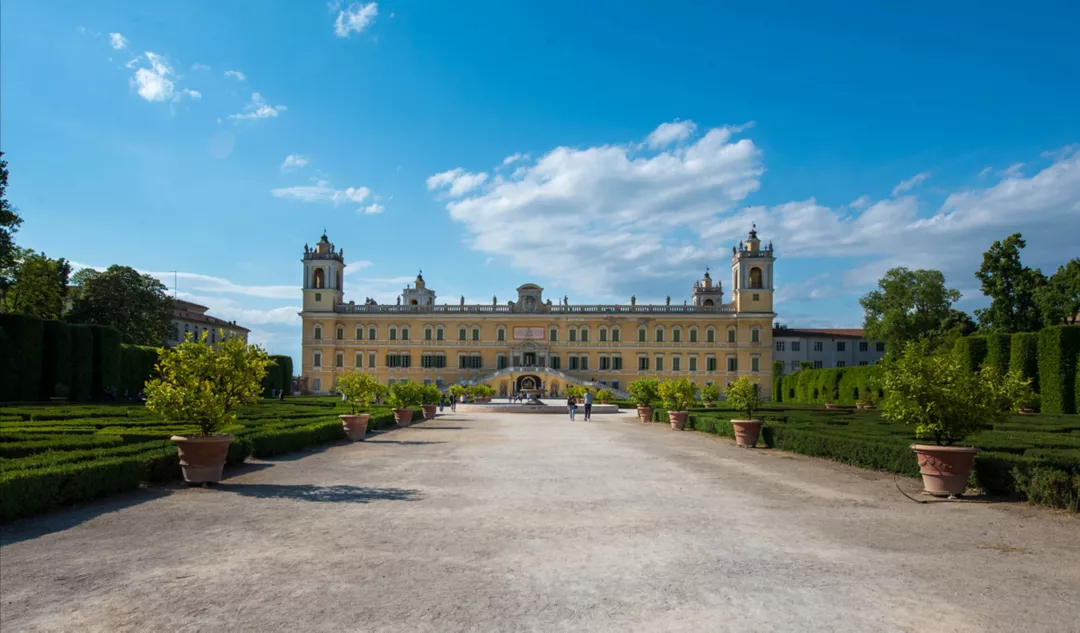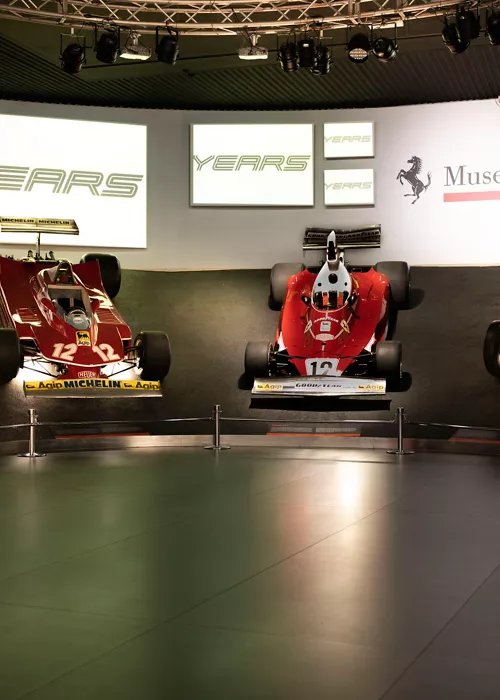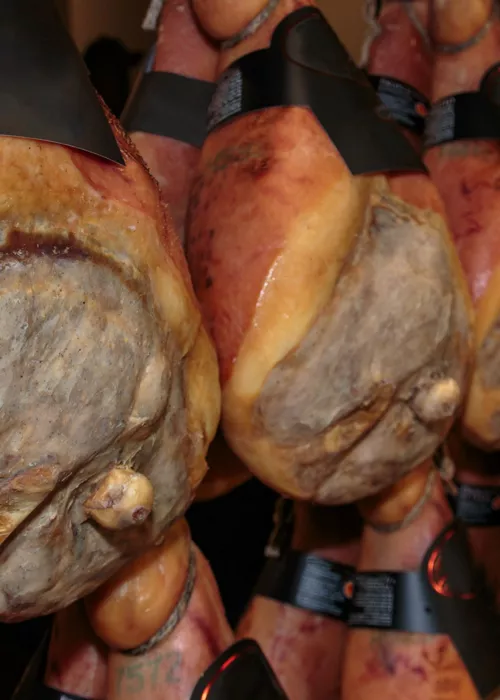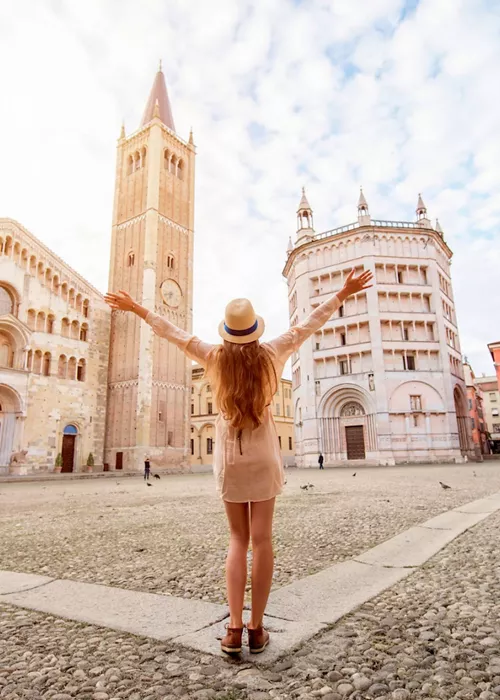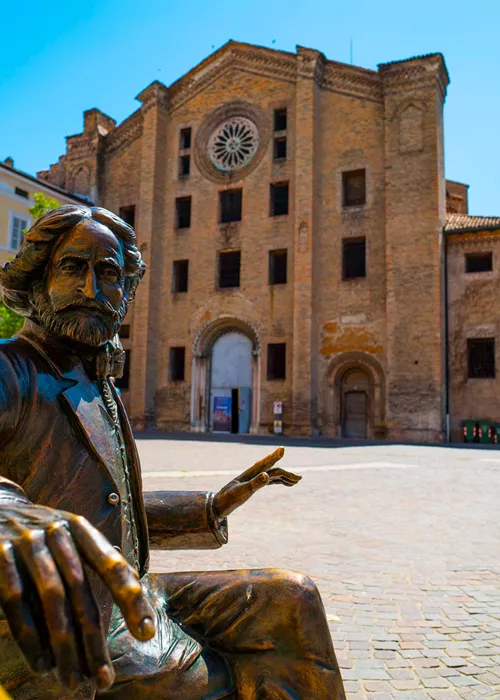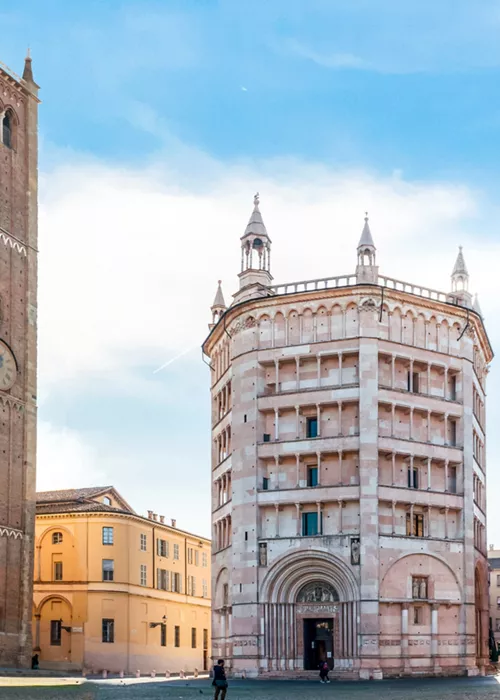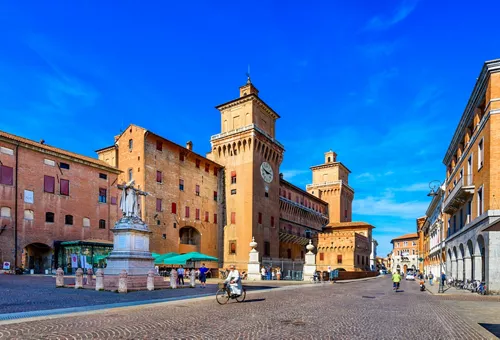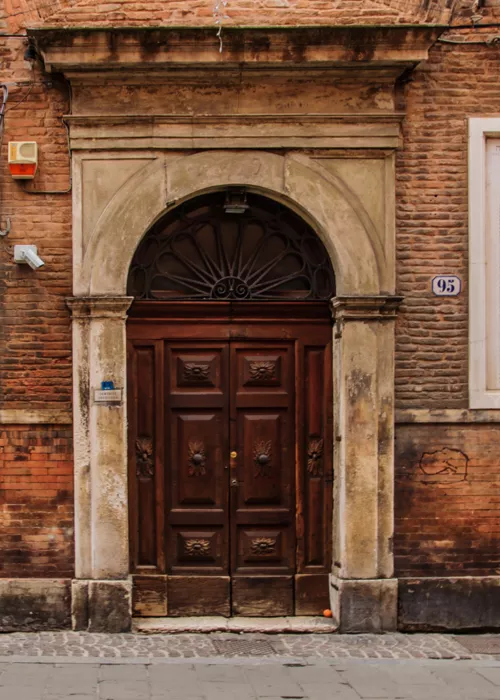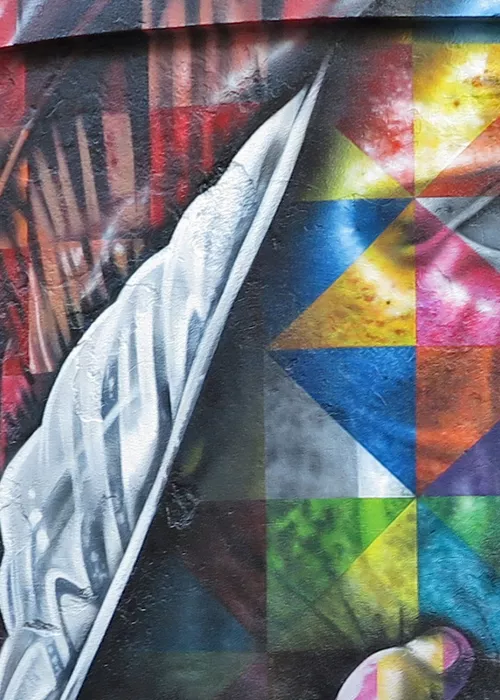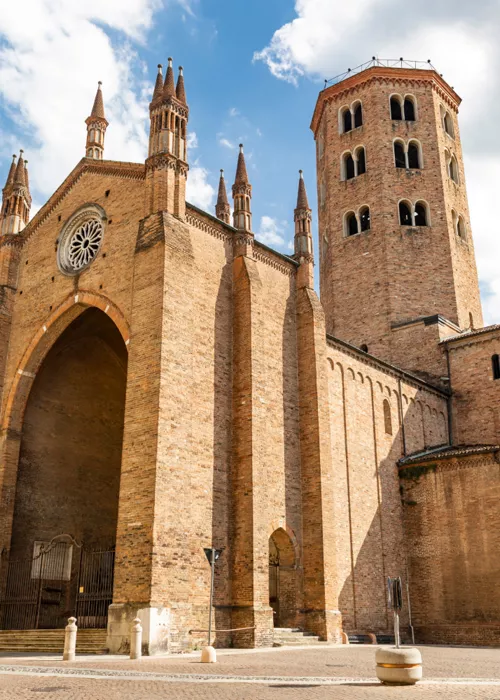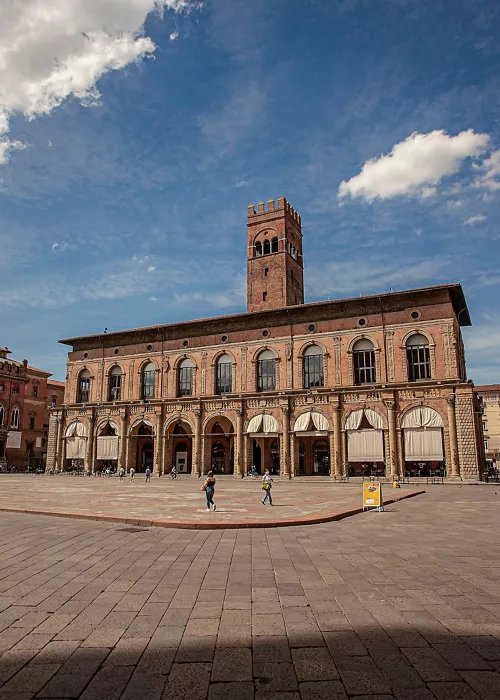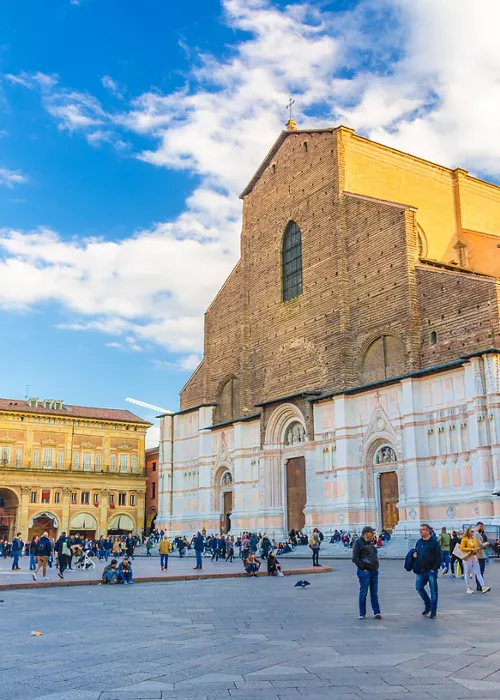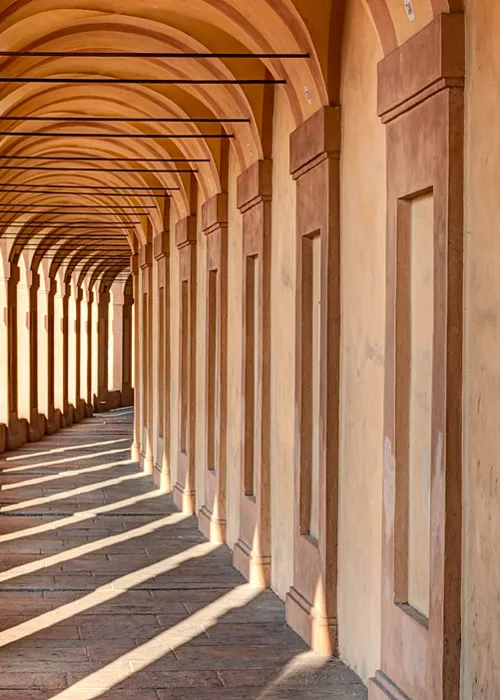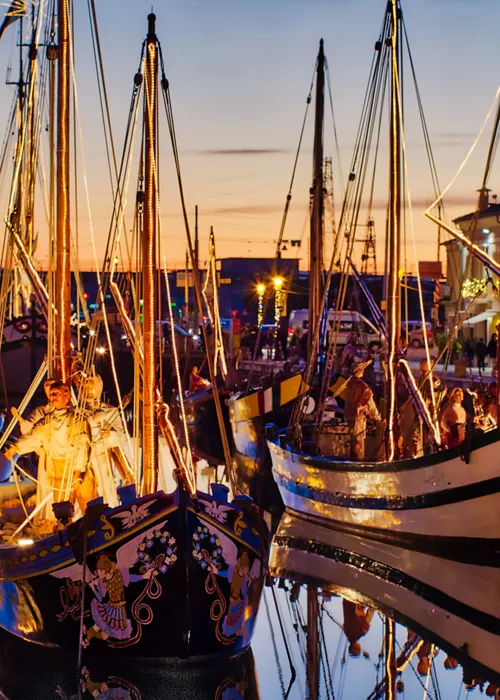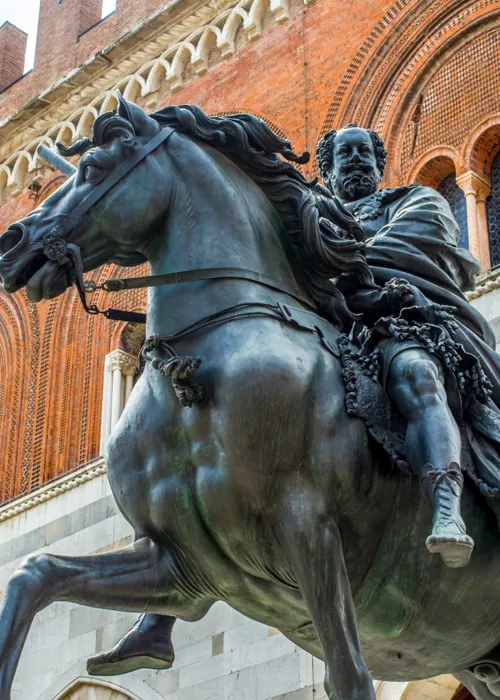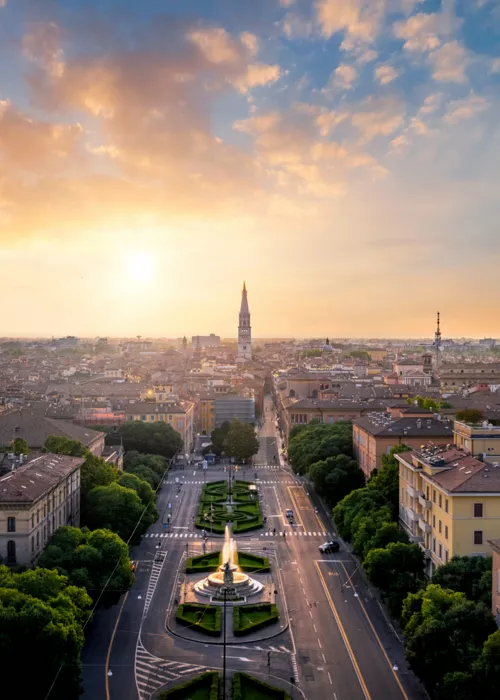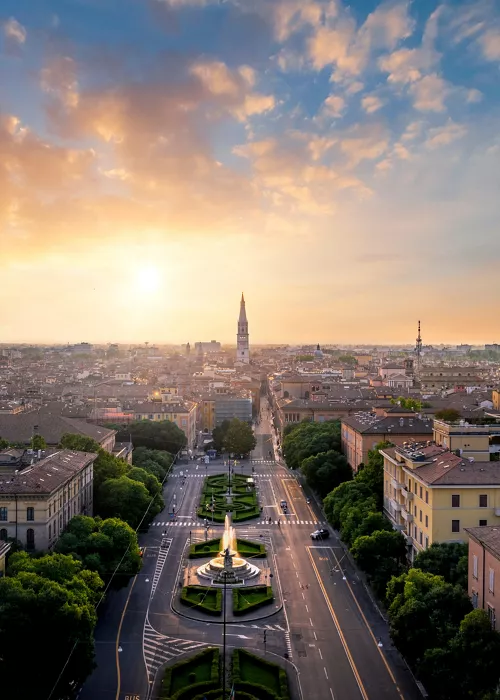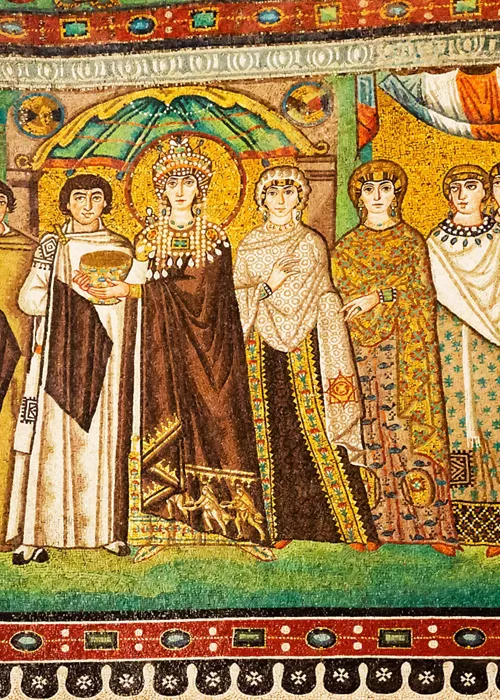Castles of the Duchy of the Piacenza and Parma area
3 minutes
Via Emilia: along the ancient road
This itinerary runs along the Via Emilia and precisely along the stretch between the Parma and Piacenza areas, where the Duchy of Parma and Piacenza ruled between 1545 and 1859.
One of the world's oldest roads, nowadays known as State Road 9, the Via Emilia is one of Emilia Romagna's prides, as well as being at the origin of the region's very name. Roman road with an epic flavour, in some sections retaining the original cobblestones.
Many centuries of history are encompassed here, from the Middle Ages to the Enlightenment, scattered traces of culture and architecture. Nearby are castles, fortresses and manor houses, extraordinary examples of the art of fortification. Along the route, the landscape changes from the Bassa Padana to the Apennines of Emilia, in a panorama of hills covered with vineyards, streams and verdant valleys. A plunge into medieval atmospheres and witnessing of historical re-enactments in costume.
The itinerary is exciting for everyone, including children; educational and exploratory workshops and even a magical Fairy Tale Park in Gropparello are dedicated to them. To make the day truly enjoyable, don't forget to organise a picnic on the lawn, as well as a stop at taverns and castle markets. If you like honest restaurants, you will find many on this stretch of road where you can enjoy renowned cured meats accompanied by local CDO wines.
Discover the treasures of the Parma region
First stop is the Reggia di Colorno, a monumental complex with over 400 rooms, a multitude of courts and courtyards, a square and a French-style garden. All around, framing the Parma stream. Pay a visit to the Chapel of San Liborio, adorned with valuable paintings and the Serassi organ, the star of the Concert Season. A place of refined taste, in every sense. Some rooms of the Ducal Palace have in fact become the headquarters of ALMA - International School of Italian Cuisine, one of the most renowned in the world, founded by chef Gualtiero Marchesi. The Astronomical Observatory is also open to the public.
Not far away, in Fontanellato, is the Rocca Sanvitale, surrounded by a large moat. The real star here is the room painted by Parmigianino in 1542, depicting the myth of Diana and Actaeon. The most curious are attracted by the Chamber of Mirrors, where a play of reflections will amaze you.
On the way up from the plains, a mandatory stop is the medieval Fortress of Bardi which dominates the so called town in a verdant setting. The walk is on the walls, along the patrol path, to the parade ground and then to the inner hall, the museum of rural civilisation and the underground ice house.
Remaining on the Apennine side, in the Upper Taro Valley, we find the village of Compiano and its castle: a grand manor with three circular towers “alla piacentina” and a square one where the prisons were arranged. The noble dynasties that have inhabited Compiano Castle over the centuries have left traces of great beauty in the interiors: Venetian fans, Spanish and French carpets, porcelain and Limoges candlesticks. Noteworthy is the International Masonic Museum, the only one in Italy, containing a collection of objects from Anglo-Saxon Freemasonry over the last 300 years.
Not to be missed in the Piacenza area
In the Vezzeno Valley, the first stop is Gropparello Castle. In the Hall of Musical Instruments stands a 19th century grand piano, the highlight of a collection that includes an 18th century harp, baroque flutes, bombards and a mechanical clavichord from Vienna.
This is the right place for children, who will be enchanted by the Museo della Rosa Nascente, a riot of varieties of roses and plants, and even more so by the Parco delle Fiabe - Italy's First Emotional Park, designed for young children. Encounters with knights, elves and witches on paths, gardens and clearings in the centuries-old forest are a surprise.
Rocca Viscontea, in the town of Castell'Arquato, was erected between 1342 and 1349. The centrepiece of the entire red brick building is the 42-metre-high keep, towering over the two enclosures and secondary towers. Vigoleno is a perfect, and magnificently preserved, example of a fortified medieval village. Impregnable once, perched on the hill, splendid to visit now with its crenellated walls. The castle inspired Duchess Maria Ruspoli de Gramont to the point that she turned it into a literary salon; here, from 1921 to 1935, the noblewoman received illustrious guests, first and foremost Gabriele D'Annunzio, the great poet.

